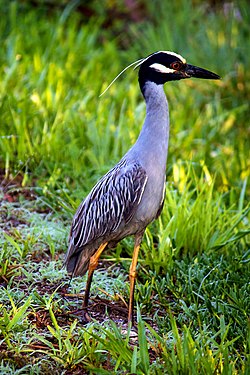| Nyctanassa | |
|---|---|
 | |
| Yellow-crowned night heron (N. violacea) | |
| Scientific classification | |
| Kingdom: | Animalia |
| Phylum: | Chordata |
| Class: | Aves |
| Order: | Pelecaniformes |
| Family: | Ardeidae |
| Subfamily: | Ardeinae |
| Genus: | Nyctanassa Stejneger, 1887 |
| Type species | |
| Ardea violacea Linnaeus, 1758 | |
| Species | |
N. violacea | |
Nyctanassa is a genus of night herons from the Americas, especially (but not exclusively) warmer coastal regions. They were formerly included in the genus Nycticorax , but today all major authorities recognize them as distinct.



